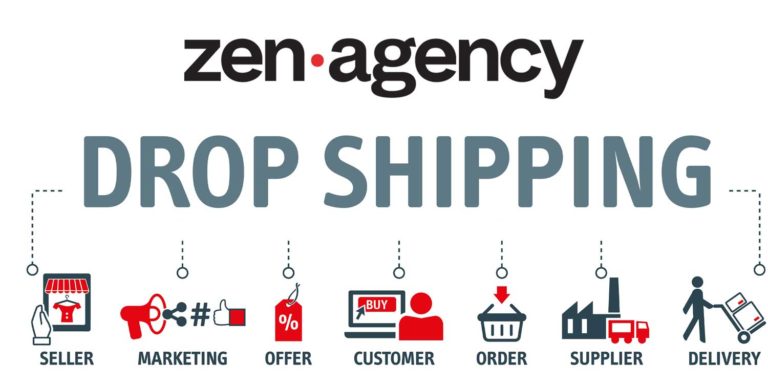Website Security Blueprint: Fortifying Your Digital Presence
Introduction
In the intricate labyrinth of the digital world, your website serves as both your sanctuary and your interface with the global audience. Yet, this sanctuary can quickly turn into a battleground if not adequately fortified. This guide serves as your comprehensive blueprint, navigating you through the complexities of web security—from elementary safeguards to advanced technologies.
Why Website Security Matters
Imagine waking up one morning to find that your website has been hacked. Customer data is compromised, and your reputation is on the line. Sounds like a nightmare, right? Well, it’s a reality for many businesses that overlook the importance of website security.
Key Reasons to Prioritize Security:
Customer Trust: The Balance of Value and Risk
When customers visit your website, they’re not just looking for value in terms of products or services; they’re also assessing the risk involved in the transaction. A secure website tilts the balance in favor of value over risk, making customers more likely to engage with your brand. An insecure website, conversely, amplifies the perceived risk, overshadowing any value you offer and eroding trust.

Data Protection: More Than Just Compliance
Protecting data isn’t just about complying with laws; it’s about safeguarding your business’s lifeblood. Data breaches can expose sensitive customer information, trade secrets, and financial records. This not only tarnishes your reputation but can also lead to severe financial losses.
SEO Ranking: The Unseen Algorithmic Benefit
Search engines like Google prioritize secure websites. An SSL certificate, for instance, is not just a security feature but also an SEO ranking factor. A higher ranking means more visibility, which translates to more traffic and potentially more sales.
Legal Consequences: The Sword of Damocles
Ignoring website security can have legal repercussions. Laws like GDPR in Europe and CCPA in California impose hefty fines for data breaches. Moreover, customers can sue your company for negligence, leading to financial and reputational ruin.
Website Security Check: The Basics
Before diving into advanced security measures, it’s crucial to have a strong foundation. Here’s why each basic step is essential:
1. Update Software: The First Line of Defense
Outdated software is a goldmine for hackers. They exploit known vulnerabilities that have been fixed in newer versions. Keeping your software up-to-date is like patching holes in your walls.
2. Strong Passwords: The Keys to Your Website
Weak passwords are akin to leaving your front door unlocked. Strong, unique passwords act as a robust lock that’s hard to pick, making unauthorized access more difficult.
3. Firewall: The Digital Sentry
Implement a WAF (Web Application Firewall): A WAF serves as a filter between your website and the internet. It scrutinizes incoming traffic and blocks malicious requests, acting like a security guard at the entrance of a building.
4. SSL Certificate: The Seal of Authenticity
Use HTTPS Instead of HTTP: HTTPS encrypts the data between the user’s browser and your server, making it harder for eavesdroppers to understand the data being transferred. It’s like sending a sealed, signed letter instead of a postcard.
5. Regular Audits: The Health Checkups
Regular security audits are like health check-ups for your website. They identify vulnerabilities and performance issues, allowing you to take corrective action before a minor issue becomes a major problem.
Technologies to Secure Your Website
Once you’ve laid the foundation with basic security measures, it’s time to build upon it using advanced technologies. Here’s a closer look at each:

Multi-Factor Authentication (MFA): The Double-Check System
Multi-Factor Authentication (MFA) requires users to provide two or more forms of identification before gaining access. This usually involves something they know (like a password) and something they have (like a mobile device to receive a verification code).
MFA adds an extra layer of security by making it more difficult for unauthorized users to gain access, even if they have your password. It’s akin to having a double-lock system on your door; even if someone has one key, they can’t get in without the second.
Data Encryption: The Secret Code
Data encryption converts your data into a code to prevent unauthorized access. Only those with the “key” (decryption algorithm) can convert it back to its original form. Encryption ensures that even if hackers intercept your data, they can’t read or use it. It’s like sending a letter in a secret code that only the recipient knows how to decipher.
Intrusion Detection Systems (IDS): The Watchful Eye
Intrusion Detection Systems (IDS) monitor network traffic for suspicious activity or known threats. If detected, the system can either alert administrators or take predefined actions like blocking the source.
IDS acts as a 24/7 security system for your network, constantly monitoring for any signs of intrusion. It’s your early warning system that can prevent a potential breach from becoming a full-blown disaster.
Content Security Policy (CSP): The Invisible Shield
Content Security Policy (CSP) is a security standard that helps prevent cross-site scripting (XSS) and other code injection attacks. It allows you to specify which sources of content are legitimate, blocking any malicious or unauthorized injections.
CSP acts like an invisible shield, blocking harmful scripts from running on your website. It’s particularly useful for websites that allow user-generated content, as it prevents malicious actors from injecting harmful code.
These technologies aren’t just standalone measures; they work best when implemented as part of a layered security strategy. By combining these advanced technologies with basic security measures, you’re building a robust digital fortress around your website
Case Studies in Web Security Failures
Equifax Data Breach: A Lesson in Patch Management
In 2017, Equifax suffered a colossal data breach affecting 143 million Americans due to an unpatched vulnerability. Prevention could have involved regular software updates to patch known vulnerabilities, vulnerability assessments to identify weak points, and implementing multi-layered security measures like Intrusion Detection Systems (IDS) for early detection of unusual activity.
Yahoo Data Breach: The Importance of Encryption
Yahoo’s 2013 data breach affected 3 billion user accounts, exposing names, email addresses, and hashed passwords. Stronger encryption methods could have secured user data more effectively. Regular security audits could have identified vulnerabilities, and user education on strong passwords and Multi-Factor Authentication (MFA) could have minimized the impact.
SolarWinds Cyberattack: The Perils of Supply Chain Vulnerabilities
In 2020, a sophisticated cyberattack targeted SolarWinds, a company that creates software for businesses and government agencies. The attackers compromised the infrastructure by inserting a vulnerability into their software updates. This breach had a ripple effect, affecting thousands of SolarWinds’ customers, including major governmental organizations. Prevention could have involved more rigorous code review processes, enhanced security protocols for software updates, and real-time monitoring for unusual access or activities within the network.
Conclusion
Navigating the labyrinthine world of web security may seem daunting, but it’s a journey you don’t have to undertake alone. By implementing a multi-layered approach—from basic precautions to cutting-edge technologies—you can transform your website from a vulnerable target into a fortified sanctuary. For those seeking professional assistance in this endeavor, consider exploring Zen Agency’s Website Maintenance and Security Services.

















